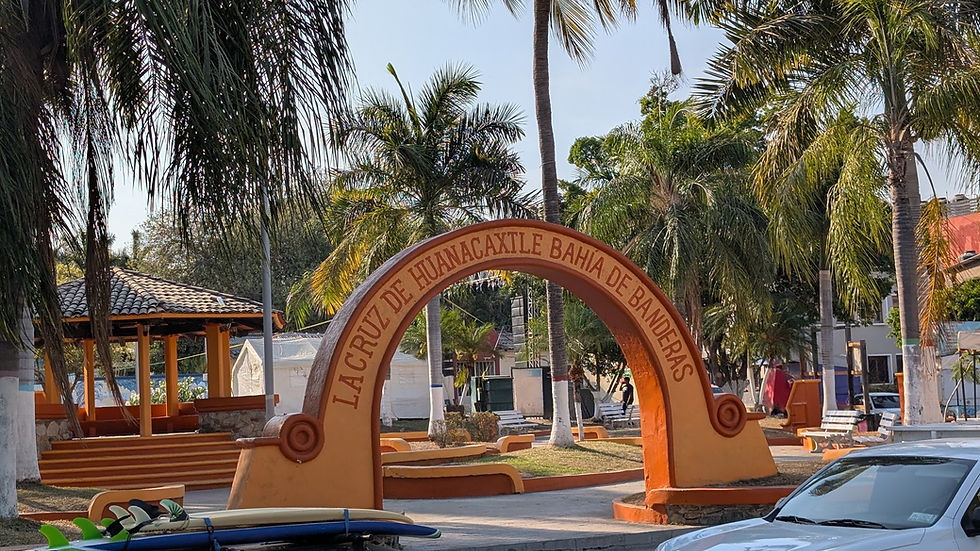Wing Engine Saves the Day
- Capt. Eric
- Feb 26, 2022
- 4 min read
After our compass swap the other day we decided to go for a cruise to test everything, and more importantly to go out and enjoy the boat in the great sunshine.
So, on a cold but magnificent day we set off up river, just because our last cruise had been down river. Mount Hood was calling us!


Enjoying the day out, no one on the river but us, with Mount Hood in the background, we decided we'd make it an overnight stop at a public dock on Government Island. One we'd never tried before despite being in our close neighborhood.
As we approached I could tell that the current was very strong, measuring it at 3.5 knots. We're used to maneuvering in the river current, so that did not alarm us particularly. We set off to do our usual maneuver, where I swing the boat back into the current so Di can jump ashore with a stern line, and tie us safely. Once the first stern line is tied ashore, the boat naturally stays close to the dock and we can take our time securing the other lines.
A combination of missing a knot and miscommunications/misunderstanding between Di and me (despite using our bluetooth headsets) meant the boat wasn't tied properly and even worse, was being taken by the current and being swung around.
I had little choice but to give a big stern kick to stop Enfin from crashing into the dock, and at that exact moment I heard Di's voice in my headset warning me the stern line was in the water, immediately followed by her warning that the line had been sucked in the propeller. Mishaps happen real fast on a boat. Luckily I always approach difficult or tight maneuvers with both the main and our wing engines running.
Our wing engine is a small Yanmar diesel engine, similar to what is found on many sailboats. It runs on a completely separate system from the main engine, both for fuel and electricity. It runs a completely separate propeller shaft with a small foldable propeller, again similar to what many sailboat have. It is not meant to give us speed, but to provide an instant backup in case something happens to the main engine and propeller. It can take Enfin back home safely at reduced speed.

Upon learning my main propeller was likely fouled, I immediately disengaged the main, and engaged the wing engine's clutch. On wing power, I got away from the dock to safety to reassess the situation.
For the longest time I wondered why Enfin carried a "spare" engine, spare propeller shaft and propeller. I wondered if a wing engine was really necessary.
On the one hand as an ex sailor I appreciate the full redundancy and safety that comes with a complete separate propulsion system. Yet, as an ex commercial seafarer I also realize most ships sailing around the world do so with one main engine only, with no backup.
Now, with the boat only seconds away from drifting into a wood levy downstream from us, I was really happy to be able to engage the wing engine and get the boat out of the danger zone in no time.
Talking to Di via our headset -I never knew they had such range!- I came back to pick her up, tie the boat to the dock safely to inspect it and decide our course of action.
The second maneuver was uneventful and easy, especially since Di was already ashore!
I went down in the engine room and checked the propeller shaft for any sign of damage or water entry. None were observed and even better, I could still turn the propeller by hand which probably meant that by switching immediately over to wing propulsion I hadn't let the mooring line tighten around the propeller.
We engaged the clutch on the main and could hear the line gently bumping against the hull, so we decided we'd return to Salpare Marina on the wing engine only, so as not to make the situation worse.
The return was our first real try out of the wing engine although we often run it as part of our regular trials and tests. It was easy. The autopilot had no problem compensating for the off-center thrust provided by the wing propeller, keeping an almost constant 9 degree rudder angle to steer straight. We kept just above 4 knots water speed, not bad considering.
Salpare is well protected and by the time we got there we had no wind or current, so once again the maneuver was simple. During the return leg, we called and found a diver who could come in at short notice and cut the line out of the propeller.
Catastrophe avoided!
The next day, in still freezing conditions, the professional diver arrived. He got the propeller free with no effort as he reported the line hadn't tightened around the propeller, which I am sure is due to the fact that we stopped using it by switching over to the wing.

He took a couple of measurements and checked things around. No damage was found on either the propeller, the main shaft or the rudder. Our brand new paint job is still intact and basically by taking the line out we're back to normal with no consequences other than maybe a lighter bank account and a slightly bruised ego.
Di and I have debriefed the mishap and are fairly confident we understand what happened, so all going well we won't have a repeat. Of course that doesn't mean we won't find other ways to mess up.



Thankfully we chose the "right" boat for us, and its numerous redundancies and in particular today the wing engine once again made a difference.



Comments